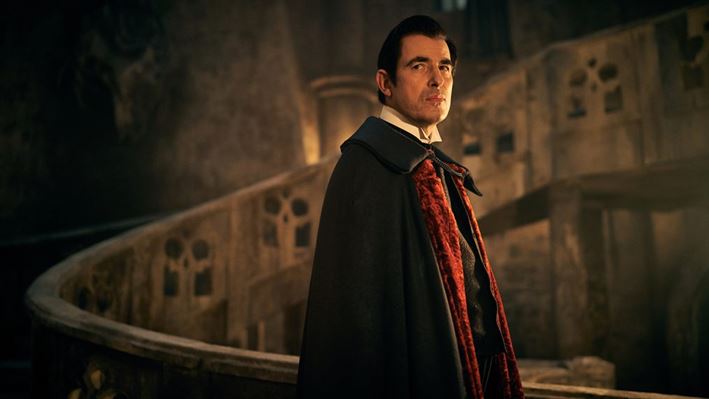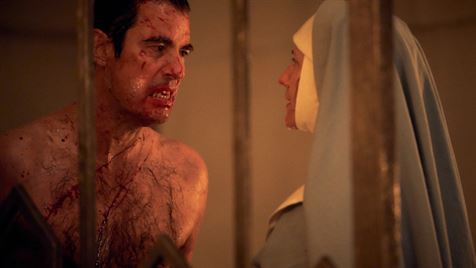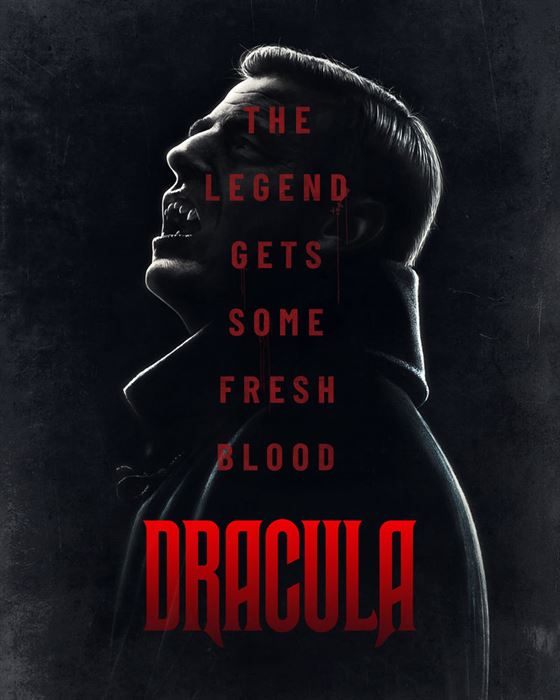Dracula has been adapted from Bram Stoker’s 1897 book many times to varying success. Very few of these adaptations stay true to the original novel, as they tend to add love stories carrying over centuries and exaggerate Dracula’s weaknesses. However, Netflix’s 2020 series “Dracula” creates an interesting balance of loyalty and innovation that makes for an interesting show.
I have always been a book person. This often means that I am offended by how filmmakers choose to adapt my favorite books into the films and television series they become. “Dracula” takes a groundbreaking step in working with the book by taking reader expectations and promptly stomping on them.
There are scenes from Stoker’s novel “Dracula” that are paralleled in the show. Johnathan Harker is still imprisoned at Castle Dracula, and Count Dracula still makes his voyage to England on the Demeter. This is where the writers, Steven Moffat and Mark Gatiss, begin to play.
Reading the book before the movie often gives the unwanted advantage of knowing what is going to happen in the movie or show. This is a challenge that is recognized by Moffat and Gatiss. Once the audience is presented something familiar from the book, it is not uncommon for the show to turn it on its head.
I should stress that this isn’t done in a way that would anger book readers. Although it is often tongue-in-cheek, it is done to make the show more interesting or to make more sense.
As amazing as Stoker’s novel was, there were certainly some plot points that needed correcting and tweaking. The series “Dracula” is eager to give its novel format a hand in that regard.
With so much information from the book to cram into a series, you might think that it would become chaotic. “Dracula” makes excellent headway in solving this problem by allowing its episodes to be 90-minute installments.
I remember feeling intimidated by the length, but the episodes do not feel nearly as long as their runtimes. They are so enthralling that they are over before you can say “blood is lives.”
The three episodes of “Dracula” have plenty of information from the books. It all feels evenly spaced out, so nothing feels thrown at you in bulk. The show feels evenly paced, even though it only has three episodes to flesh itself out.
These three episodes are also made captivating through the beautiful cinematography. I know little about film, but I could recognize the beautiful shots throughout the show.

Dracula (Claes Bang) stands on the steps of Castle Dracula in Wallachia, Romania.
Photo courtesy of Netflix
One of my favorites is from episode one, which displays the sunlight over Castle Dracula. The Count is left to stand in the shadow, while Harker is able to lay in the sunlight. The dichotomy of light and dark and warm and cold in the scene is wonderfully executed.
The gore in this series is well done. Poorly executed gore can really detract from the moment. “Dracula” owns its gory nature and delivers plenty of scares throughout. In the novel and series, Dracula can transform into a wolf. Dracula escapes from his wolven form by tearing out from within the animal’s body. It’s hard to watch since it looks so real. However, it is incredibly hard to look away from a sight like that one.
I don’t have a problem with the show per say, but I will admit episode three was not as engaging to me as the former two episodes.
Episode three is the only episode that takes place in modern times. The episode itself was not bad, but I found the rustic appeal of the episodes in 1987 fit with the show better.
I would be remiss to talk about this show without mentioning my favorite aspect of it: Count Dracula.
Dracula is an amazing character. They keep him true to the book, eliminating the “love through the ages” motif that has become popular. He is an evil character, hands down, but he is also hilarious and complicated.

Dracula, played by Claes Bang, confronts sister Agatha van Helsing, played by Dolly Wells.
Photo courtesy of BBC
Dracula’s banter with Agatha Van Helsing is the funniest part of the show. He is sardonic and jaded, which makes for humorous commentary.
Apart from the humor, the show delves into the idea of why certain things, like the crucifix and not being welcomed in, have an effect on Dracula. This investigation allows the audience to see some depth in the vampire’s character, which allows him to be more than just evil.
If you are a fan of dark humor, horror or vampires, I would encourage you to take a bite out of Netflix’s “Dracula.”




